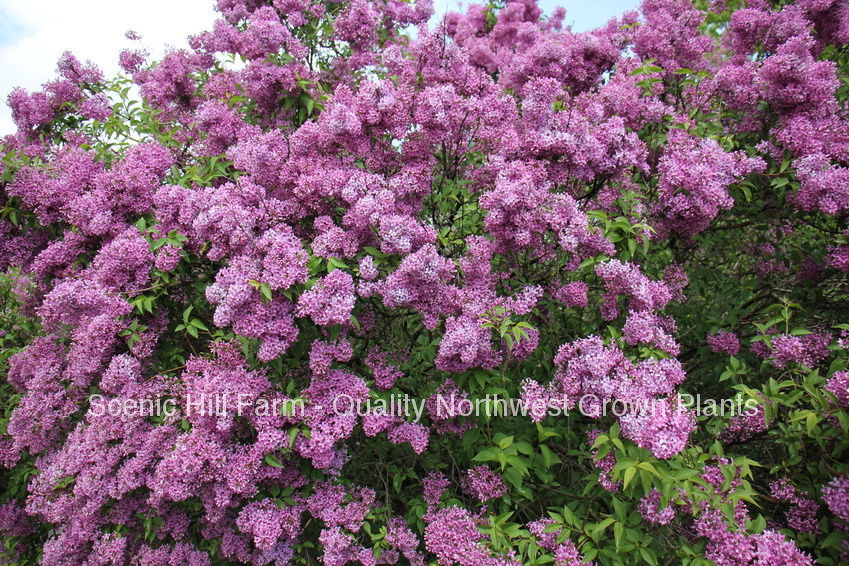Nothing is more fragrant than classic lilacs in spring. I am a lilac nut and have 21 different varieties growing in my yard. They are hard to stay inside when they are in bloom, unless you pick some to put in a vase.
Lilacs (Syringa vulgaris, USDA Hardiness Zones 3-7) come from the mountains of southeastern Europe. Back in 1563, the Austrian Ambassador to Istanbul brought back shoots of the wild blue lilac, which is how the rest of Europe first learned about this shrub. They became an instant hit, especially in France. Soon, people had both purple and white lilacs in their gardens, and they started picking out different types. In the 1600s, lilacs came to America. They still had either purple or white flowers, and there were no great named varieties.
Of all the lilac varieties, the old fashioned dark purple lilac remains one of the most beloved. With its rich hue, intense fragrance, and timeless appeal, this classic lilac has been a garden staple for centuries. If you want to add a touch of nostalgia and old-world charm to your landscape, read on to learn more about growing these traditional lilacs.
Overview of the Old Fashioned Dark Purple Lilac
The old fashioned dark purple lilac typically refers to the common or French lilac (Syringa vulgaris) This heirloom variety dates back to the 1700s and was likely first cultivated in Eastern Europe The shrubs reach heights of 10-20 feet and bear abundant blooms in spring.
The flowers emerge in panicles ranging from lavender-purple to deep reddish-purple. They put on a stunning floral display in mid to late spring. The blooms also release an intensely sweet, perfume-like fragrance that carries on the breeze. The dark green heart-shaped leaves provide a nice backdrop.
These old world lilacs are extremely hardy, surviving bitter cold winters and summer heat. They are long-lived, with some shrubs lasting over 100 years when cared for properly. The purple color and fragrance make them excellent cut flowers.
Where to Find Old Fashioned Dark Purple Lilac Shrubs
Due to their timeless popularity it’s easy to find old fashioned dark purple lilac shrubs for sale
-
Local nurseries – Many garden centers sell larger potted shrubs you can plant anytime.
-
Mail order – Online retailers like Spring Hill Nursery offer jumbo shrubs delivered bare root while dormant.
-
Specialty growers – Small farms like Elmore Roots Nursery and Greenwood Nursery sell lilac shrubs and whips.
Look for options grafted on dwarfing rootstock if you need a smaller shrub under 10 feet tall. For the traditional experience, go with common old fashioned lilacs reaching 15-20 feet.
Where to Plant Your Old Fashioned Lilac
To thrive, common lilac shrubs need:
-
Full sun – At least 6 hours of direct sun daily for optimal flowering.
-
Well-drained soil – Avoid wet, soggy soils which can lead to root rot.
-
Adequate air circulation – Space shrubs to preventissues with mildew and disease.
-
Chilled dormancy – Colder winters lead to the most prolific blooms. protection may be needed in warmer climates.
Plant lilacs near entries, walkways, and patios where their fragrance can be enjoyed. They also make beautiful informal hedges. Give them room as they mature into large shrubs.
Caring for Old Fashioned Dark Purple Lilacs
While quite robust once established, dark purple lilacs do require some care and maintenance:
-
Prune annually – Remove old flower clusters and shape after blooming to promote flowers and form.
-
Water during drought – Established lilacs are drought tolerant but need supplemental watering during very dry periods.
-
Fertilize in spring – Use a balanced organic fertilizer or slow-release shrub food to energize growth.
-
Watch for pests – Monitor for borers, aphids, scale, and powdery mildew. Treat as needed.
-
Divide if needed – Dig up overgrown shrubs and replant divisions to rejuvenate lilacs every decade.
With proper siting and care, fragrant dark purple lilacs can enhance landscapes for generations with their timeless beauty and intoxicating spring fragrance. They evoke fond memories of childhood, cottages, and old-fashioned charm.
Enjoying the Flowers and Fragrance
One of the best parts of growing old fashioned dark purple lilacs is enjoying their magnificent blooms each spring. Here are some ways to make the most of their flowers:
-
Snip a few blooming sprays to bring indoors for bouquets. Freshen water daily to enjoy the scent.
-
Craft fragrant lilac potpourris by drying the purple blooms to use in sachets.
-
Weave flowering sprigs into flowery wreaths to adorn doors and mantles.
-
Set lilac blooms in clear glass vases and bowls to perfume rooms.
-
Float individual blooms in glasses or bowls of lemonade, punch, or iced tea for color and scent.
-
Infuse lilac blossoms in oil for a few weeks then use for fragrant lotions and soaps.
-
Make lilac jelly, syrup, or ice cream from the edible flowers.
With their long history and old-world roots, common dark purple lilacs remain a sentimental favorite for good reason – their beauty and fragrance are timeless. Add some to your own garden and enjoy a tradition that has captivated generations.
Great Lilacs and Their Histories
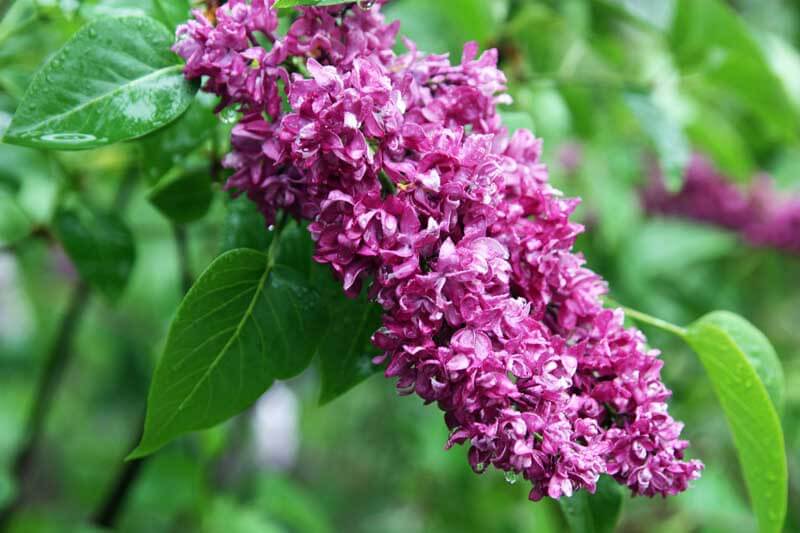
In the early 1800s, Europeans began developing improved white and dark purple lilacs and new colors, such as clear rose. But it wasn’t until a French nurseryman, Victor Lemoine (1876-1927) from Nancy, France, became interested in lilacs and began breeding them that many of the most beautiful lilacs ever were developed. He bred them for much of his life and named over 153 classic varieties, many of which are still sold at garden centers today. His double-flowered varieties have never been surpassed. One of my favorites is ‘Charles Joly’, with very fragrant, double, deep magenta flowers in mid-May. It is still considered the best lilac in its color range. Other of his bests include the award-winning ‘Miss Ellen Willmott’, a superb double bloomer with large, white flowers, ‘Montaigne’ (1907), an excellent pink and white double, and ‘Madame Charles Souchet’, a very showy variety with large florets of pale to medium lilac-blue.
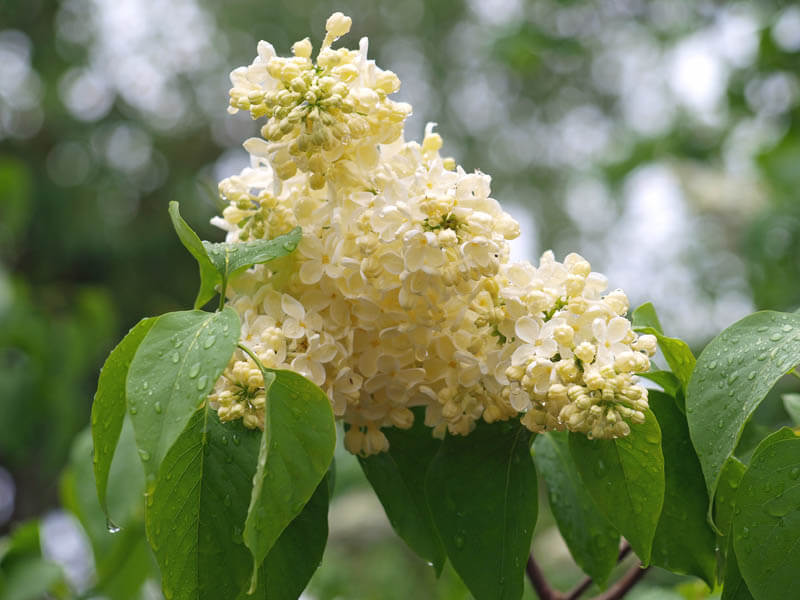
The second great breeder of lilacs was the American Father Fiala (1924-1990). This Ohio parish priest started working with his favorite flower as a hobby in the 1940s. The lilacs in his grandmother’s large garden made him fall in love with them. Father Fiala created fifty different kinds of lilacs. When he died in 1990, he was working on more. The eight-foot-tall “Marie Frances” is a true pink variety with a strong scent. The eight-foot-tall “Blanche Sweet” has blue flowers that are tinged with pink and is also very fragrant. The six-foot “Wedgewood Blue” is a true blue variety, the ten-foot “Avalanche” has double white flowers, and the twelve-foot “Primrose” has unusual light yellow flowers.
He also helped to start the International Lilac Society and wrote the best book on lilacs, called “Lilacs – the Genus Syringa.” This book is still available and is a must-have for lilac lovers.
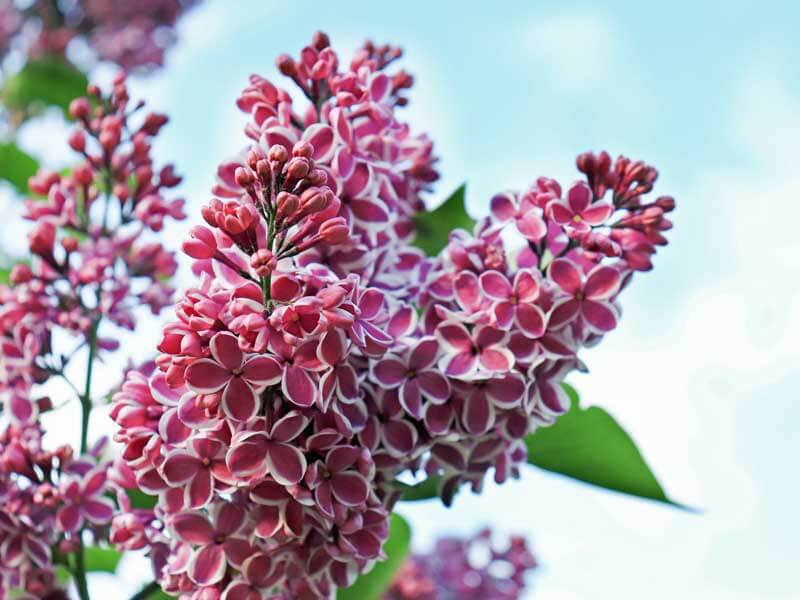
The wonderful “Beauty of Moscow” lilac is another one that deserves mention. Its pink buds open to beautiful, double white flowers. Leonid Kolesnikov, a Russian hybridizer, created the heirloom plant in 1943, and it is still widely sold as a garden favorite. Another that is a perennial favorite is the bicolored ‘Sensation’, with large, unique reddish-purple flowers edged in white.
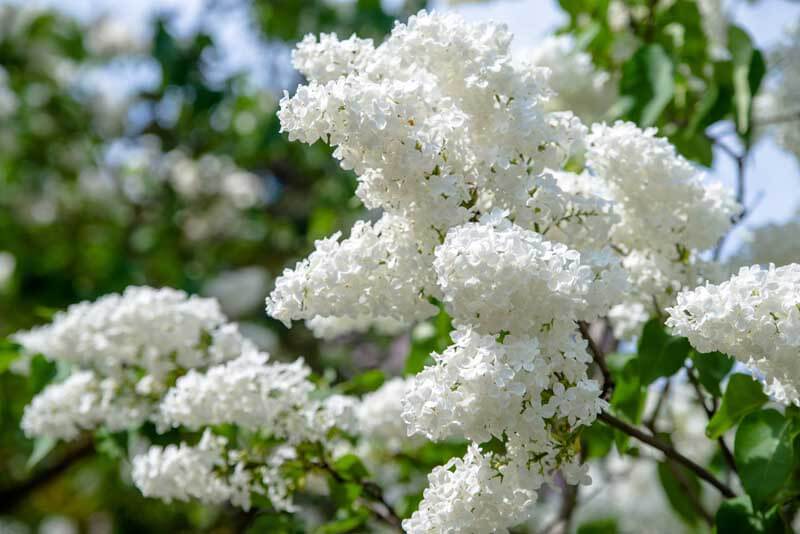
Because lilacs are shrubs that can live for more than 100 years, it is important to put them in the right place. Lilacs grow in Zones 3 to 7. Any farther south is just too warm for their survival. They do best in full sun, unless you live somewhere where it gets really hot in the summer. In that case, afternoon shade is best.
Most of all, lilacs cannot tolerate wet feet. They have to have well-drained soil at all times. Soil that is average to poor with a neutral to alkaline pH is preferred. Established plants will tolerate dry soil. However, newly planted shrubs need to be kept moist for the first year until their roots are established. If you want to keep water in during the summer, mulch is best. But make sure to leave a 4-inch space around the plant’s base that isn’t mulched to avoid crown rot. Everything needs more water during a real drought (we didn’t get any rain from August to November of last year).
Lilacs can grow to be 6 to 15 feet tall and 4 to 12 feet wide, so make sure you leave enough space between them. Add some Black Gold Garden Soil to the soil you dig up before planting any shrubs or trees. This helps them get a good start. It is rich in organic matter and feeds plants for up to six months.
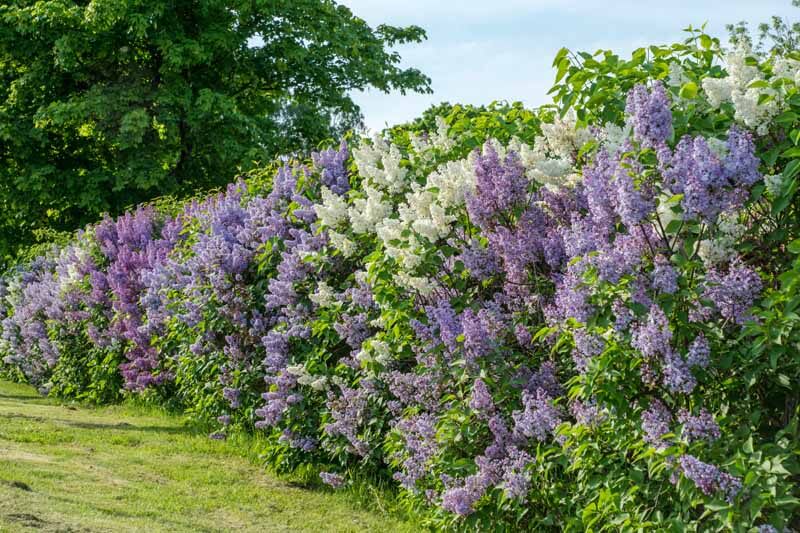
Prune just after shrubs bloom because they only flower on last year’s branches. If you prune in the fall or spring, you will cut off next year’s flowers. Cutting back some of the old, thick, trunks by one third will help promote new growth. If you need to do a lot of pruning, lilacs can handle it. They can be cut back to just a couple of feet and grow back. This is called “hard pruning.”
Bloomerang Dark Purple Lilac | gardencrossings.com
FAQ
How big does an old fashioned lilac bush get?
What is the name of the dark purple lilac tree?
What is the original lilac?
How to grow old fashioned lilac?
- The Ultimate Guide to Growing Strawberries in Raised Beds - August 8, 2025
- No-Dig Garden Beds: The Easiest Way to Grow a Beautiful Garden - August 6, 2025
- How to Protect and Preserve Wood for Raised Garden Beds - August 6, 2025

